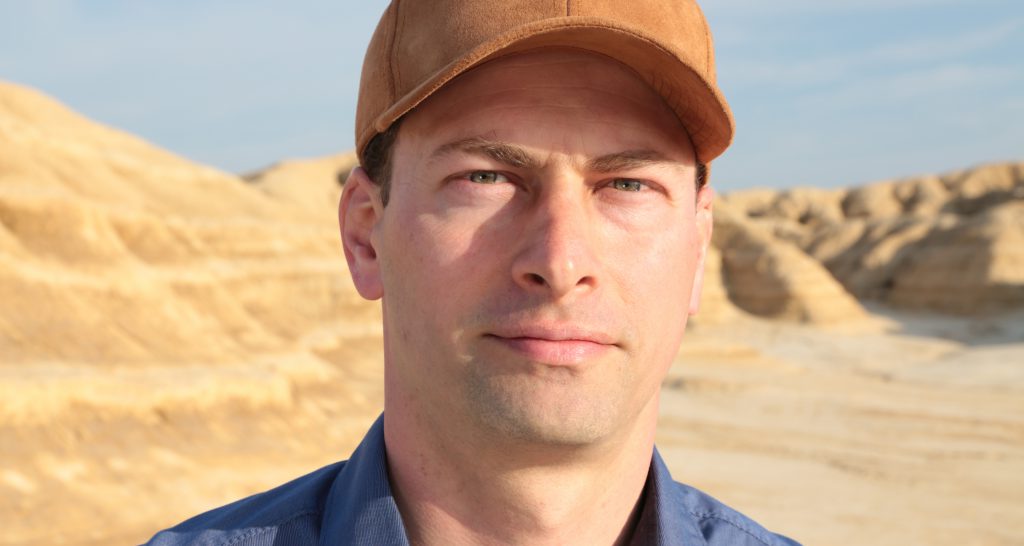“The expectation generated by the experimental La casa del desierto project has given a huge boost to tourism in the region, helping to raise awareness about the Gorafe desert itself”.
La casa del desierto, besides being an experimental research idea conceived by Guardian Glass as a means of testing their glass solutions in an external climatological environment, has become one of the most interesting and compelling marketing and communication projects to be developed by the North American company.
A living structure made entirely from glass that welcomes the challenges posed by the Gorafe desert (Granada), one of Europe’s most climatologically adverse and extreme locations. This was an exclusive, demanding, risky, creative and efficient project that was made possible by a team of qualified professionals who joined forces for a unique experience.
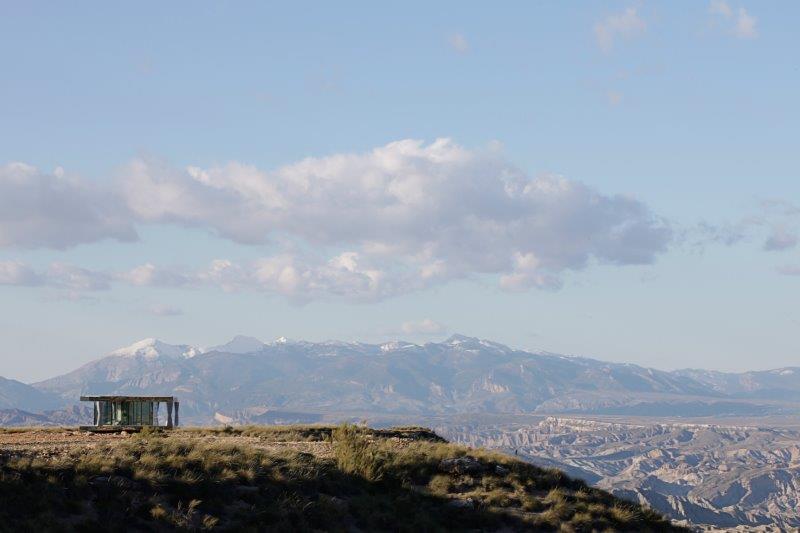
On this occasion, Lookout Pro was lucky enough to interview Tamás Kovács, Guardian Glass Head of Technical Advice, about this unprecedented project in Spain.
How did the idea of creating a glass house in the middle of the desert come about?
Guardian Glass came up with the idea of devising a pioneering architectural project that would allow us to push our glass solutions to the limit, demonstrating, by selecting the correct glass, that humans can comfortably inhabit any environment regardless of how extreme the climatological conditions may be.
Why was the Gorafe desert chosen as the location for the house?
The Gorafe desert was chosen because it is one of the most climatologically adverse locations in Europe. Temperatures can vary greatly in the same day, making it the perfect location to test the Guardian Glass solutions and their thermal isolation capacity, in the face of the extreme heat and cold of the desert.
The design of the house is the fruit of the work carried out by a team of architects from OFIS Architects, led by Špela Videčnik, in collaboration with AKT II and Transsolar glass and engineering specialists and energy consultants. How did you bring each of these parts together?
Coordination between the various parts was extremely important for the success of the project. As we got closer to defining the final specification of the glass, we moved through multiple planning cycles and had to conduct several structural, energy efficiency and design calculations. It was a real international project, uniting experts from different European countries, and, on a personal level, it has been tremendously exciting to be part of this team.
When carrying out the project, what were the greatest challenges that you had to overcome?
The short answer is that the biggest challenge was to create a complete and structurally stable “pack” for the architecture of the house, requiring no more energy than that which the roof’s solar panels can produce. Likewise, we needed the glass to be sufficiently transparent for the guests to feel the connection with the natural environment surrounding them.
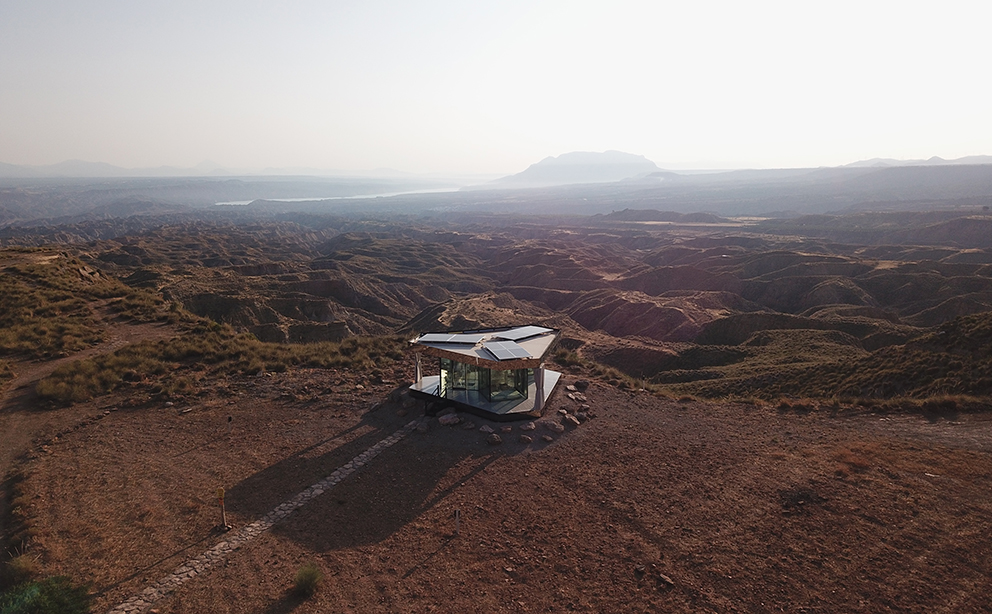
La casa del desierto has become a model of sustainable architecture. Was this one of the objectives for the project?
Absolutely. Respect for the environment and sustainability already comprise the present and future of the industry. It’s also our way of consuming fewer resources. Our glass can be used to create energy efficient buildings and constructions, with ‘The Desert House’ being an example of this. Glass, in this sense, plays a very important role. In fact, just by looking at the house, you already get a good idea of the role that glass plays, with each wall being made entirely from this material.
Given that our intention was to connect exterior and interior areas as much as possible, this was one of the key design specifications from the very beginning. Meanwhile, these large glass panes make it enormously difficult for the house to have low energetic consumption, considering the desert climate in which it is found. That is precisely what we wanted to demonstrate: that we could successfully address this challenge with our current treated glass.
Following this experience, can you state that glass is one of the architectural resources that best deal with heat?
Undoubtedly. Glass is massively important here. This idea is shared by the project’s architect, Špela Videčnik, who has stated on more than one occasion that glass is the real hero in this project, expressing how each member of the team has enjoyed testing the glass to its very limits. We’ve needed to test its thermal properties, ensuring that the house remains cool during the heat of summer while retaining warmth in the cold winter months.
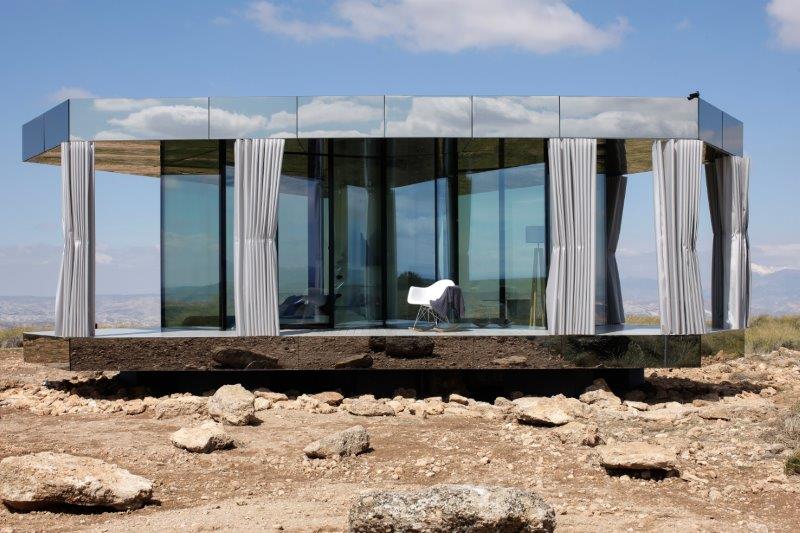
A demanding environment requires a high-performance glass that can meet the challenges posed by the most adverse climatological conditions: we therefore opted for Guardian SNX 60. Guardian Glass recommends this glass for residential buildings with large glass surfaces in locations of extreme climates. In this project, where we had to specifically address the climatological conditions posed by the Gorafe desert, we opted to install triple-glazed panes with the following dimensions:
- Exterior pane: 10mm Guardian SNX 60 HT
- Gap 1: 18mm, 90% Argon
- Middle pane: 6mm ClimaGuard Premium 2T
- Gap 2: 18mm, 90% Argon
- Interior pane: 5.5.4 Laminated glass
This spectrally selective configuration provides 52% light transmission and a solar factor of 25%, meaning it blocks 75% of solar energy, obtaining a final Ug value of 0.5 w/m2K
Owing to its special conditions, the house has not been designed to be lived in continuously. Rather, it is a pilot experience that aims to export a model of a futuristic house designed with extreme climate conditions in mind. It’s now been open for less than a year, how has it been received, and what have the results been?
So far, we are delighted with the reception of this experimental project and the impact that it is having. Not just because the people who stay there get a first-hand look at how the glass works in this environment, but also because the project is receiving tremendous media coverage.
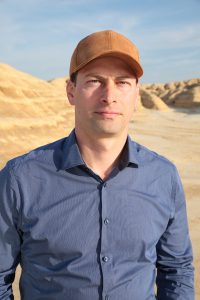
“La casa del desierto is a pioneering architectural project that entails a unique experience for guests, with this being extensively covered by the world’s media. It has also served as inspiration for many brands and producers, who have travelled to the Gorafe desert to shoot films, adverts, photo sessions, etc. in and around the house.”
La casa del desierto represents a commitment to smart tourism, offering guests a unique experience in an exceptional setting with a comfortable and cost interior space. Has tourism in the area increased since this project was implemented?
Local authorities could probably give you a more detailed answer to this question, but the feedback we’ve received to date from the Gorafe Town Hall – which has collaborated closely with us since the inception of the project, and without whose help the ‘Desert House’ would never have got off the ground – is very positive in this regard.
The expectation generated by this experimental project has given an enormous boost to tourism in the region, helping to raise awareness about the Gorafe desert itself.
Little-by-little, responsible tourism is becoming increasingly popular in Spain, with exclusive offers and unique experiences in which guests can respect and connect with their natural surroundings. Is La casa del desierto an example of this: an ‘experience’ that is not quite a hotel or a house?
As I said before, the project was conceived as a way of demonstrating the importance of glass in architecture and construction, and how the proper glass selection can help create comfortable spaces in any environment. However, it was equally important for the experience to be a sustainable one. La casa del desierto was designed in such a way that it leaves no trace whatsoever; once it is removed from the Gorafe desert, you will never know it had once stood there.
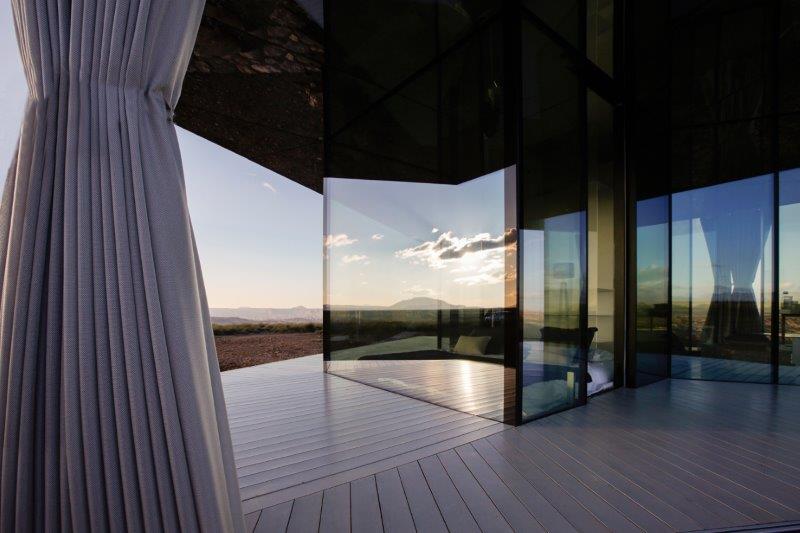
What are the nationalities of guests who have stayed in ‘The Desert House” so far?
The majority are Spanish and Portuguese, given that the campaign was carried out in the Iberian Peninsula. However, many guests and invitees have come from all over the world to experience the properties of the glass, including the Netherlands, Italy, Russia and many other European countries. Some visitors have also come from the United States of America.
This is clearly an Instagram-friendly location! You have been visited by several famous figures, influencers and celebrities…has this been your best marketing tool for raising awareness about the project?
Of course! La casa del desierto has already opened its doors to several celebrities and famous figures, ranging from “influencers” like Dulceida and Marta Carriedo to television presenters like Jesús Calleja. Journalists have come to report on the experience; fashion and design photographers have come to shoot photos of the structure; and it has also been the set for several famous television series, music videos and adverts, etc.
Since the arrival of these figures, La casa del desierto has become one of our most interesting and compelling marketing and communication projects, in addition to being an experimental research project in which Guardian Glass has been able to test its glass solutions in extreme climatological conditions.
All sorts of people – not only these professionals – come to stay in the house. What are those guests who stay for one day looking for?
Besides the clients and professionals associated with the construction and design industry, guests staying in La casa del desierto (who can make reservations at https://www.yourgreatindoors.com/es/reservas) are seeking a unique experience through which they can disconnect from the hustle and bustle of city life while experiencing a special connection with the landscape and surrounding areas.



